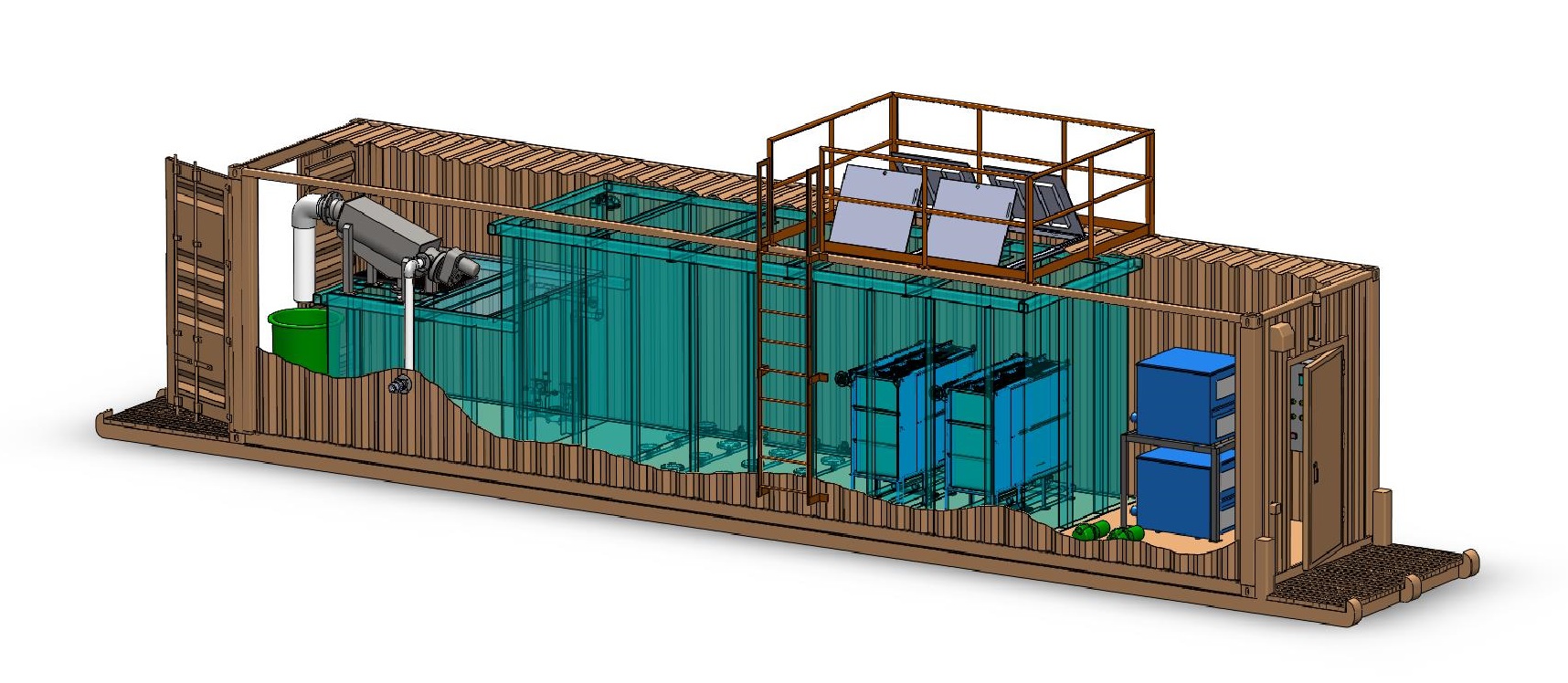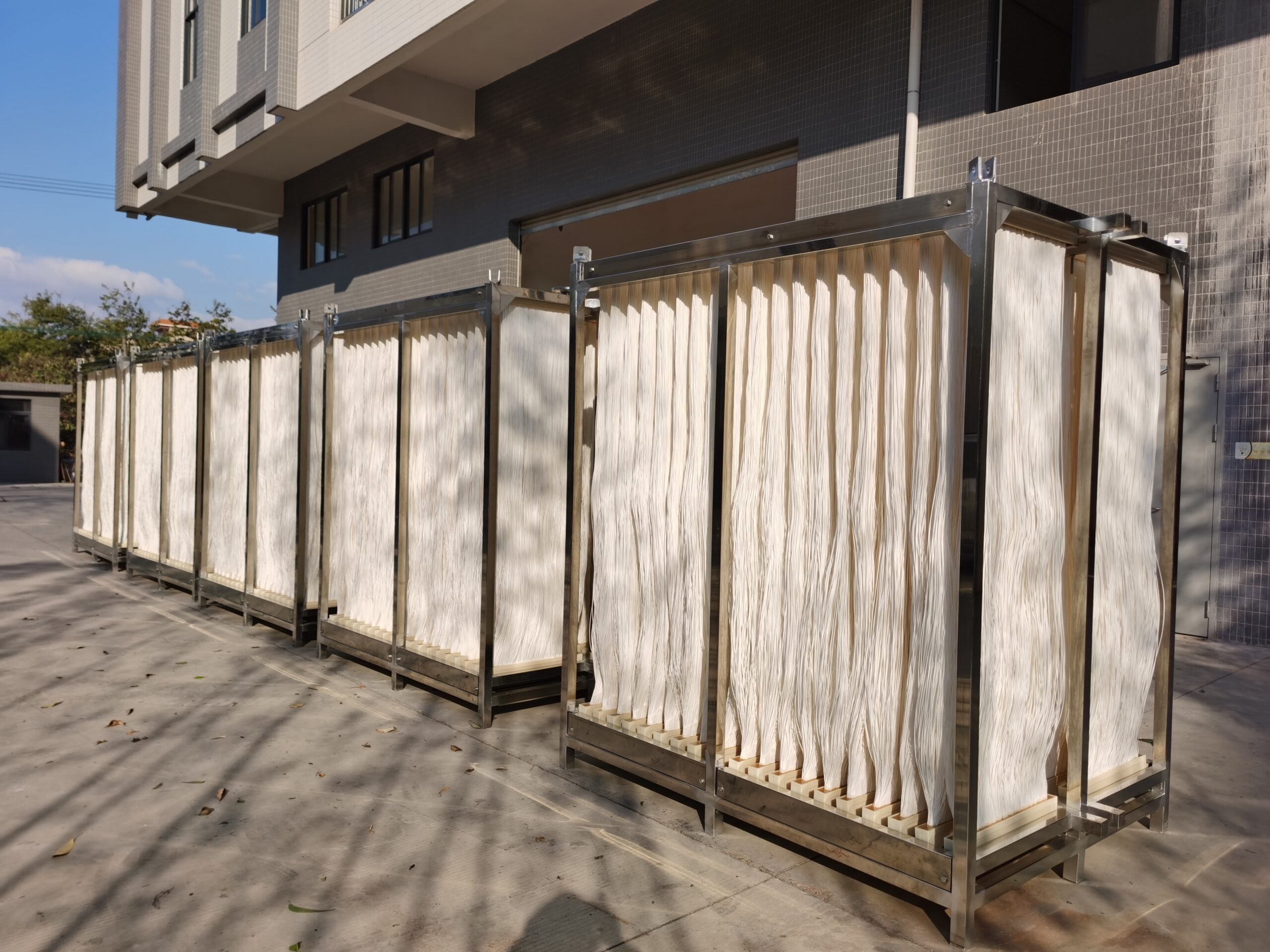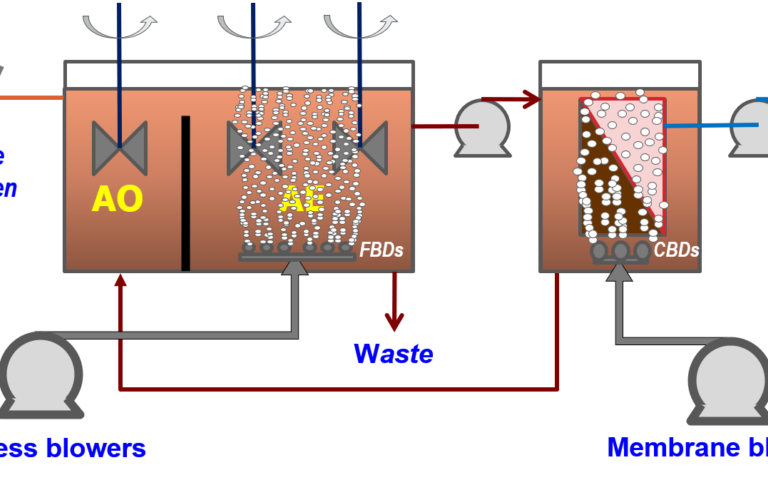Why Membrane Bioreactor is the Future of Wastewater Treatment in Industries
Why Membrane Bioreactor is the Future of Wastewater Treatment in Industries
Blog Article
Membrane Bioreactors Described: Efficient Solutions for Clean Water
Membrane bioreactors (MBRs) have emerged as an innovative remedy for resolving the pushing difficulties of wastewater treatment - Membrane Bioreactor. By integrating biological procedures with sophisticated membrane layer filtering, MBRs not only improve the top quality of cured water however likewise minimize the spatial demands of therapy centers.

What Are Membrane Bioreactors?
Membrane bioreactors (MBRs) are advanced wastewater treatment systems that combine organic degradation processes with membrane layer purification innovation. This combination permits the reliable removal of contaminants from water, making MBRs a recommended choice in different applications, including local wastewater treatment and commercial effluent monitoring.

One of the essential advantages of MBRs is their capacity to generate top quality effluent, usually appropriate for reuse in watering or industrial processes. In addition, MBRs require a smaller sized footprint contrasted to standard therapy systems, making them suitable for urban settings where area may be limited.
Furthermore, MBRs can efficiently take care of varying influent loads and are less vulnerable to the results of hazardous shocks. These attributes add to their expanding appeal as a sustainable option for attending to the enhancing demand for clean water while lessening ecological impacts.
How Membrane Layer Bioreactors Job
While the procedure of membrane layer bioreactors (MBRs) may seem complex, it fundamentally focuses on the harmony between biological procedures and membrane layer purification. MBRs integrate a biological treatment procedure, normally activated sludge, with a membrane separation unit to deal with wastewater effectively.
In an MBR system, wastewater is first introduced into a bioreactor where microorganisms deteriorate raw material and various other impurities. The biological task decreases the concentration of pollutants while promoting the growth of biomass. Following this organic treatment, the combined liquor is subjected to membrane layer filtration, which can be microfiltration or ultrafiltration, depending upon the preferred effluent top quality.
The membranes work as a physical barrier, enabling water and tiny solutes to pass while keeping put on hold solids and larger molecules. This enables the system to keep a high concentration of biomass within the activator, improving the treatment efficiency.
Additionally, the constant separation of treated water from the biomass assists in a portable layout and decreases the impact of the treatment facility. On the whole, the mix of organic destruction and membrane filtering in MBRs results in trustworthy and effective wastewater therapy, making certain high-quality effluent appropriate for numerous applications.
Advantages of MBR Innovation
One of the vital advantages of membrane layer bioreactor (MBR) modern technology is its ability to generate high-grade effluent with a dramatically lowered impact compared to standard wastewater therapy techniques. MBR systems successfully combine biological therapy and membrane filtration, resulting in superior elimination of pollutants, consisting of put on hold solids, microorganisms, and raw material. This capacity results in effluent that typically satisfies or surpasses rigid regulative standards for reuse and discharge.
Additionally, MBR technology enables higher biomass concentrations, which boosts the treatment effectiveness and reduces the required activator volume. This compact design is specifically helpful in metropolitan locations where room is restricted. The operational versatility of MBR systems also means they can adjust to differing influent high qualities and flow rates, making them suitable for a vast array of applications.
Additionally, the minimized sludge production connected with MBR processes adds to reduce functional and maintenance expenses. The membrane layers function as a physical obstacle, reducing the threat of clogging and enabling longer operational periods between cleaning. Generally, the benefits of MBR technology make it an attractive solution for lasting wastewater treatment, addressing both environmental issues and the demand for reliable source administration.
Applications of Membrane Layer Bioreactors
With their adaptability and efficiency, membrane bioreactors (MBRs) discover applications across various fields, including local wastewater therapy, industrial processes, and also water reclamation. In municipal setups, MBRs give a portable solution for treating wastewater, effectively getting rid of pollutants while all at once generating top notch effluent that meets stringent regulative criteria. This makes them particularly appropriate for locations with minimal space.
In commercial applications, MBR technology is made use of for dealing with procedure water, especially in sectors such as food and beverage, pharmaceuticals, and petrochemicals. These industries take advantage of MBRs' capability to browse around these guys deal with high natural tons and their performance in recovering valuable sources from wastewater, such as nutrients and water.
In addition, MBRs play a vital function in water reclamation initiatives, making it possible for the reuse of dealt with wastewater for watering, commercial processes, or also as safe and clean water after additional treatment (Membrane Bioreactor). Their efficiency in eliminating virus and pollutants makes them a reliable option for guaranteeing water quality in different reuse applications
Future of Water Therapy Solutions
The future of water therapy solutions is positioned for transformative improvements driven by technological development and raising ecological recognition. As international water shortage comes to be a pressing concern, brand-new techniques, including membrane bioreactor (MBR) systems, are established to play an essential duty in improving the performance and sustainability of water treatment processes.
Arising modern technologies such as synthetic intelligence and artificial intelligence are expected to enhance treatment operations, permitting real-time tracking and predictive upkeep. This will certainly improve the general reliability and effectiveness of water therapy facilities. Developments in membrane layer materials, such as graphene and nanofiltration, promise to enhance permeation prices and minimize fouling, leading to lower power intake and operational expenses.
Additionally, the assimilation of renewable resource resources into water treatment plants will add to greener practices. The circular economy model will certainly likewise acquire have a peek at these guys traction, encouraging the recovery of beneficial sources from wastewater, such as nutrients and energy.
Final Thought

Membrane bioreactors (MBRs) have arised as an advanced solution for dealing with the pressing obstacles of wastewater treatment. By incorporating biological procedures with sophisticated membrane filtration, MBRs not only enhance the high quality of cured water however additionally lower the spatial demands of treatment centers.One of the vital benefits of membrane layer bioreactor (MBR) innovation is its capability to create top quality effluent with a substantially minimized impact compared to traditional wastewater therapy approaches.With their versatility and efficiency, membrane layer bioreactors (MBRs) find applications throughout numerous markets, consisting of municipal wastewater therapy, commercial procedures, and even water improvement.In conclusion, membrane bioreactors stand for a considerable improvement in wastewater therapy innovation, integrating biological processes with efficient membrane purification to create high-quality effluent.
Report this page